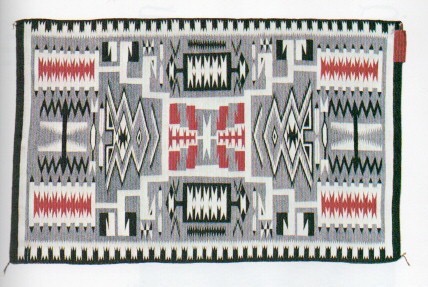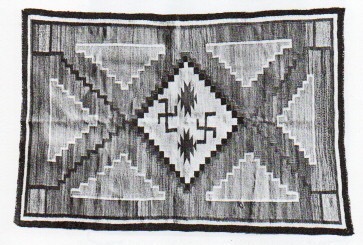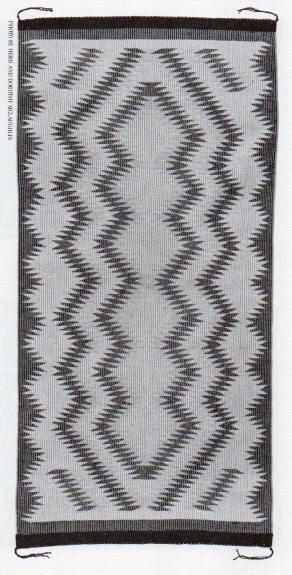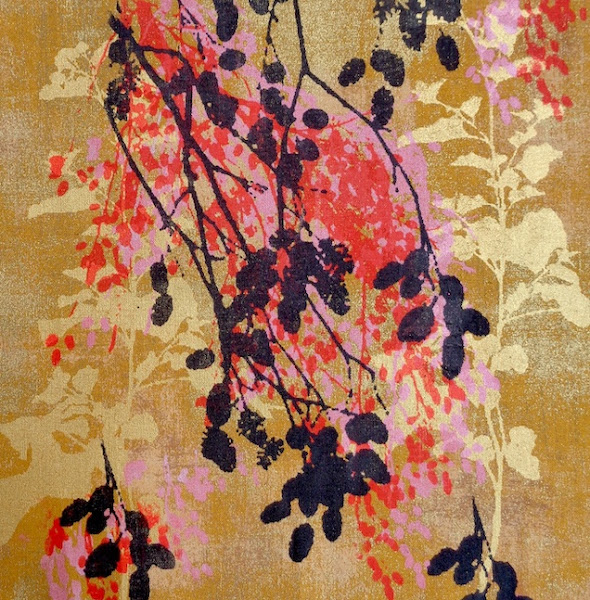Preamble
My artwork has appeared in a number of exhibitions which has been featured on this blog spot. For your convenience I have listed these posts below.
ArtCloth: Engaging New Visions (Marie-Therese Wisniowski - Curator's Talk)
Sequestration of CO2 (Engaging New Visions) M-T. Wisniowski
Codes – Lost Voices (ArtCloth Installation) M-T. Wisniowski
Unleashed: The Rise of Australian Street Art (Art Exhibition) Various Artists
Merge and Flow (SDA Members Exhibition) M-T. Wisniowski
The Journey (Megalo Studio) M-T. Wisniowski
Another Brick (Post Graffiti ArtCloth Installation) M-T. Wisniowski
ArtCloth Swap & Exhibition
My Fifteen Year Contribution to the '9 x 5' Exhibition
When Rainforests Ruled (Purple Noon Art & Sculpture Gallery) M-T. Wisniowski
When Rainforests Glowed (Eden Gardens Gallery) M-T. Wisniowski
My Southern Land (Galerie 't Haentje te Paart, Netherlands) M-T. Wisniowski
The Last Exhibition @ Galerie ’t Haentje the Paart
Mark Making on Urban Walls @ Palm House (Post Graffiti Art Work)
Fleeting - My ArtCloth Work Exhibited @ Art Systems Wickham Art Gallery
Timelines: An Environmental Journey
My Contribution to Lake Macquarie's Water Exhibition
The Effects of Global Warming - ArtCloth Exhibition@Rathmines Heritage Centre’s Boiler Room
ATASDA's ‘A Touch of Gold’ 50th Anniversary Exhibition - Part I
ATASDA’s ‘A Touch of Gold’ 50th Anniversary Exhibition - Part II
ATASDA's 'A Touch of Gold’ 50th Anniversary Exhibition - Part III
Introduction
Celebrating the 50th anniversary of the Australian Textile Arts & Surface Design
Association (ATASDA), the exhibition, ‘A Touch of Gold’, explores artist's concepts of the theme. In tandem with the ‘A Touch of Gold’ exhibition, other projects have been initiated to celebrate the organization’s extraordinary 50-year contribution to the field of textile arts and surface design.
The Collaborative Golden Cape project.
One garment representing 50 years of creativity in textile arts.
Members of ATASDA have joined together to create a beautiful cape comprising of 50 art panels inspired by 50 past ATASDA members artworks. Each contribution to the Cape is a personal response to its corresponding historic artwork and its story. The Golden Cape, embellished with these beautiful cameos of textile art and surface design, will travel and be displayed throughout Australia.
Criteria for each artwork panel specified that the orientation of the work had to be in landscape format with the exact finished size being 20 cm wide x 16 cm high. Any textile medium and technique could be used noting that the edges were not to fray. The 50 completed artwork pieces that were being sewn into the cape had to be lightweight and flexible to ensure that the finished cape could be rolled up to travel throughout Australia.
My Contribution - MENA
My contribution to the Collaborative Golden Cape project is titled, ‘MENA’, and
was based on ATASDA member Barbara McLennan’s historic textile artwork titled, ‘Morocco’’ whereby I employed some of her colour elements as an influence for my ArtCloth work.
Barbara McLennan’s archival historic artwork brought back to me many wonderful memories of my numerous trips to the Middle East. In particular, the richness of the cultures, the artworks, the architecture, the colours and scents, as well as the meticulous detail to handmade crafted objects - just highlights some of my lasting memories!
The diversity of religion forced to coexist side-by-side, not always in harmony but always reflecting a richness of life that is emphasized by the colors used in their artefacts and clothing designs.
My Middle East experiences as well as my personal photo portfolio, and colour elements from Barbara’s artwork informed my ArtCloth piece titled, ‘MENA.’ The base layer employs Middle Eastern quatrefoil designs in deconstructed deep red/brown hues. A second layer, employs detailed ceramic tile patterning in various shades of blue. The mid-field employs complex geometric designs used in Middle Eastern crafts, architecture and jewellery designs that mostly employ metallic gold - signifying wealth in colour as well as monetary value. Small scale floating quatrefoil designs are repeated on the surface layer in rich red and yellow hues, adding movement and visual depth to the underlying design aesthetic, as well as principles employed in the creation of Middle Eastern decorative art.
Exhibition Dates and Venue
(i) Incinerator Art Space, Willoughby, Sydney, NSW 17th April to 5th May 2024.(ATASDA gratefully acknowledges Willoughby City Council for the provision of Incinerator Art Space); (ii) Whitehorse Artspace Gallery, Box Hill, Victoria 30th November to 21st December 2024.
My Contribution to ATASDA's ‘A Touch of Gold’ 50th Anniversary Exhibition - Part II
MENA (Collaborative Golden Cape project)
Title: MENA.
Technique and Media: The artists signature MultiSperse Dye Sublimation (MSDS) technique, stencilled and hand painted employing disperse dyes, opaque and metallic pigment on synthetic satin bonded onto cotton substrate.
Size: 20 cm wide x 16 cm high.
Title: MENA (Detailed View 1).
Title: MENA (Detailed View 2).
Preamble
For your convenience, I have listed below posts that also focus on rugs.
Navajo Rugs
Persian Rugs
Caucasian Rugs
Turkish Rugs
Navajo Rugs of the Ganado, Crystal and Two Grey Hills Region
Navajo Rugs of Chinle, Wide Ruins and Teec Nos Pos Regions
Navajo Rugs of the Western Reservation
Navajo Rugs of the Western Reservation [1]
The region of weaving on the west side of Navajoland is as large as some Eastern States in the USA. The region is roughly one hundred and twenty by fifty miles, from Coppermine on the west to Chilchinbito on the east, from Kaibito on the north to Tuba City on the south. Other weaving centers in this region are Shanto, Inscription House, Kerley's Trading Post, Camerson, The Gap, Paiute Mesa, Navajo Mountain and Cedar Ridge. For these far-flung communities Tuba City functions as something of a satellite capital.
Maker: Ella Yazzi Bia.
Comment[1]: Ella Yazzi Bia of White Clay, Arizona, was commissioned to copy a design in Read Mullan's catalog. In six months the job was done but with tiny differences in design.
Size: 39 x 63 inches.
Courtesy: Tom E. Kirk Collection.
Maker: Unknown.
Comment[1]: Genesis of storm pattern elements are shown in this early example (circa 1910.)
Size: 46 x 60 inches.
Courtesy: Museum of Northern Arizona.
Three weavers of note in this region are Mabel Bighorse, Marie Sheppard and Mary Wison Begay.
Maker: Mabel Bighorse.
Maker: Marie Sheppard.
Note: No specifics about her work were given by reference [1].
Maker: Mary Begay.
Comment [1]: Seemingly in action is this vibrant raised-outline, Mary Begay weave of double-saddle proportions.
Size: 30 x 60 inches.
Courtesy: Read Mullan Collection.
Maker: Mary Begay.
Title: Bird Pictorial.
Note: No specifics about her work were given by reference [1].
Maker: Mary Begay.
Title: Two Grey Hills.
Note: No specifics about her work were given by reference [1].
Reference:
[1] D. Dedera, Navajo Rugs, Northland Publishing, Flagstaff, Arizona (1990).
Preamble
My artwork has appeared in a number of exhibitions which has been featured on this blog spot. For your convenience I have listed these posts below.
ArtCloth: Engaging New Visions (Marie-Therese Wisniowski - Curator's Talk)
Sequestration of CO2 (Engaging New Visions) M-T. Wisniowski
Codes – Lost Voices (ArtCloth Installation) M-T. Wisniowski
Unleashed: The Rise of Australian Street Art (Art Exhibition) Various Artists
Merge and Flow (SDA Members Exhibition) M-T. Wisniowski
The Journey (Megalo Studio) M-T. Wisniowski
Another Brick (Post Graffiti ArtCloth Installation) M-T. Wisniowski
ArtCloth Swap & Exhibition
My Fifteen Year Contribution to the '9 x 5' Exhibition
When Rainforests Ruled (Purple Noon Art & Sculpture Gallery) M-T. Wisniowski
When Rainforests Glowed (Eden Gardens Gallery) M-T. Wisniowski
My Southern Land (Galerie 't Haentje te Paart, Netherlands) M-T. Wisniowski
The Last Exhibition @ Galerie ’t Haentje the Paart
Mark Making on Urban Walls @ Palm House (Post Graffiti Art Work)
Fleeting - My ArtCloth Work Exhibited @ Art Systems Wickham Art Gallery
Timelines: An Environmental Journey
My Contribution to Lake Macquarie's Water Exhibition
The Effects of Global Warming - ArtCloth Exhibition@Rathmines Heritage Centre’s Boiler Room
ATASDA's ‘A Touch of Gold’ 50th Anniversary Exhibition - Part I
ATASDA’s ‘A Touch of Gold’ 50th Anniversary Exhibition - Part II
ATASDA's 'A Touch of Gold’ 50th Anniversary Exhibition - Part III
Introduction
Celebrating the 50th anniversary of the Australian Textile Arts & Surface Design Association (ATASDA), the exhibition, 'A Touch of Gold,' explores artist's concepts of the theme. In tandem with the 'A Touch of Gold' exhibition, other projects have been initiated to celebrate the organization's extraordinary 50-year contribution to the field of textile arts and surface design.
Background Information
ATASDA started out as the Batik Association in 1974. As part of the celebration, current New South Wales members of ATASDA received a 22 x 22 cm piece of fabric which was initially stamped with wax as a resist and hand dyed for a 'Batik Block Challenge' project in recognition of its early history.
Each member could choose a motif or imagery that represented them as a member of ATASDA. Techniques could include the artist's chosen textile art practice such as - appliqué, embroidery, contemporary stitching, painting, printmaking, collage, knitting, crochet etc.
The completed fabric blocks will be assembled together as a wall hanging celebrating present-day members of ATASDA, NSW, and when the organization began as the Batik Association.
Amaranthine (Batik Block Challenge)
My contribution to the 'Batik Block Challenge Wall Hanging' project was based on imagery employing printmaking techniques and was titled, 'Amaranthine.' Color choices included the amaranthine color palette and the exhibition theme color of gold. Interestingly, 'Amaranthine' is described as being an imaginary flower that never fades. My passion for the natural world culminates in this printed ArtCloth work with my hand drawn and hand printed botanical and cascading floral imagery encompassing my aesthetic for multi-layered, and multi-hued visual elements that is the basis of my storytelling.
Exhibition Dates and Venues
(i) Incinerator Art Space, Willoughby, Sydney, NSW 17th April to 5th May 2024. (ATASDA gratefully acknowledges Willoughby City Council for the provision of Incinerator Art Space);
(ii) Whitehorse Artspace Gallery, Box Hill, Victoria, from 30th November to 21th December 2024.
My Contribution to ATASDA's ‘A Touch of Gold’ 50th Anniversary Exhibition - Part I
Amaranthine (Batik Block Challenge)
Image: Amaranthine (Full View).
Technique and Media: Screenprinted - employing transparent, opaque and metallic pigments on supplied Batik block fabric.
Size: 22 x 22 cm.
Image: Amaranthine (Detailed View 1).
Image: Amaranthine (Detailed View 2).
Preamble
This is the thirtieth post in a new Art Resource series that specifically focuses on techniques used in creating artworks. For your convenience I have listed all the posts in this new series below:
Drawing Art
Painting Art - Part I
Painting Art - Part II
Painting Art - Part III
Painting Art - Part IV
Painting Art - Part V
Painting Art - Part VI
Home-Made Painting Art Materials
Quality in Ready-Made Artists' Supplies - Part I
Quality in Ready-Made Artists' Supplies - Part II
Quality in Ready-Made Artists' Supplies - Part III
Historical Notes on Art - Part I
Historical Notes on Art - Part II
Historical Notes on Art - Part III
Historical Notes on Art - Part IV
Historical Notes on Art - Part V
Tempera Painting
Oil Painting - Part I
Oil Painting - Part II
Oil Painting - Part III
Oil Painting - Part IV
Oil Painting - Part V
Oil Painting - Part VI
Pigments
Classification of Pigments - Part I
Classification of Pigments - Part II
Classification of Pigments - Part III
Pigments for Oil Painting
Pigments for Water Color
Pigments for Tempera Painting
Pigments for Pastel
Japanese Pigments
There have been another one hundred and thirteen posts in a previous Art Resource series that have focused on the following topics:
(i) Units used in dyeing and printing of fabrics;
(ii) Occupational, health & safety issues in an art studio;
(iii) Color theories and color schemes;
(iv) Optical properties of fiber materials;
(v) General properties of fiber polymers and fibers - Part I to Part V;
(vi) Protein fibers;
(vii) Natural and man-made cellulosic fibers;
(viii) Fiber blends and melt spun fibers;
(ix) Fabric construction;
(x) Techniques and woven fibers;
(xi) Basic and figured weaves;
(xii) Pile, woven and knot pile fabrics;
(xiii) Durable press and wash-and-wear finishes;
(xvi) Classification of dyes and dye blends;
(xv) The general theory of printing.
To access any of the above resources, please click on the following link - Units Used in Dyeing and Printing of Fabrics. This link will highlight all of the one hundred and thirteen posts in the previous a are eight data bases on this blogspot, namely, the Glossary of Cultural and Architectural Terms, Timelines of Fabrics, Dyes and Other Stuff, A Fashion Data Base, the Glossary of Colors, Dyes, Inks, Pigments and Resins, the Glossary of Fabrics, Fibers, Finishes, Garments and Yarns, Glossary of Art, Artists, Art Motifs and Art Movements, Glossary of Paper, Photography, Printing, Prints and Publication Terms and the Glossary of Scientific Terms. All data bases in the future will be updated from time-to-time.
If you find any post on this blog site useful, you can save it or copy and paste it into your own "Word" document for your future reference. For example, Safari allows you to save a post (e.g. click on "File", click on "Print" and release, click on "PDF" and then click on "Save As" and release - and a PDF should appear where you have stored it). Safari also allows you to mail a post to a friend (click on "File", and then point cursor to "Mail Contents On This Page" and release). Either way, this or other posts on this site may be a useful Art Resource for you.
The new Art Resource series will be the first post in each calendar month. Remember - these Art Resource posts span information that will be useful for a home hobbyist to that required by a final year University Fine-Art student and so undoubtedly, some parts of any Art Resource post may appear far too technical for your needs (skip those mind boggling parts) and in other parts, it may be too simplistic with respect to your level of knowledge (ditto the skip). The trade-off between these two extremes will mean that Art Resource posts will be hopefully useful in parts to most, but unfortunately may not be satisfying to all!
Introduction
Tempera painting, is painting executed with pigment ground in a water-miscible medium. The word 'tempera' originally came from the verb 'temper'; that is, to bring to a desired consistency. Dry pigments are made usable by 'tempering' them with a binding and adhesive vehicle. Such painting was distinguished from fresco painting, as the colors contained no binder. Eventually, after the rise of oil painting, the word gained its present meaning.
Tempera is an ancient medium, having been in constant use in most of the world’s cultures until it was gradually superseded by oil paints in Europe, during the Renaissance. Tempera was the original mural medium in the ancient dynasties of Egypt, Babylonia, Mycenaean Greece, and China and was used to decorate the early Christian catacombs. It was employed on a variety of supports, from the stone stelae (or commemorative pillars), mummy cases, and papyrus rolls of ancient Egypt to the wood panels of Byzantine icons and altarpieces and the vellum leaves of medieval illuminated manuscripts.
Artist and Title: William Blake (1757–1827). Lot and His Daughters (1799–1800).
Technique: Pen and tempera on canvas.
Size: 10 1/4 x 14 3/4 in. (26 x 37.5 cm).
Courtesy: The Huntington Library, Art Museum, and Botanical Gardens
True tempera is made by a mixture containing the yolk of fresh eggs, although manuscript illuminators often used egg white and some easel painters added the whole egg. Other emulsions—such as casein glue with linseed oil, egg yolk with gum and linseed oil, and egg white with linseed or poppy oil—have also been used. Individual painters have experimented with other recipes, but few of those have proved successful; all but William Blake’s later tempera paintings on copper sheets, for instance, have darkened and decayed, and it is thought that he mixed his pigment with carpenter’s glue.
Artist and Title: William Blake (1757–1827) Songs of Innocence and of Experience (1794).
Technique: Hand-colored relief etching on copper plate.
Size: 112 x 68 mm.
Courtesy: Print Room, The British Museum.
Distemper is a crude form of tempera made by mixing dry pigment into a paste with water, which is thinned with heated glue in working or by adding pigment to whiting (a mixture of fine-ground chalk and size). It is used for stage scenery and full-size preparatory cartoons for murals and tapestries. When dry, its colors have the pale, matte, powdery quality of pastels, with a similar tendency to smudge. Indeed, damaged cartoons have been retouched with pastel chalks.
Artist and Title: Dirk Bouts, The Entombment (Graflegging in Dutch), probably 1450s.
Technique: Glue-size tempera on linen.
Size: 87.5 × 73.6 cm (34.4 × 29 in).
Courtesy: National Gallery, London (NG 664).
Egg tempera is the most-durable form of the medium, being generally unaffected by humidity and temperature. It dries quickly to form a tough film that acts as a protective skin to the support. In handling, in its diversity of transparent and opaque effects, and in the satin sheen of its finish, it resembles the modern acrylic resin emulsion paints.
Artist: Duccio di Buoninsegna (ca. 1283-1284).
Technique and Materials: Tempera and gold on wood.
Size: 86 cm × 60 cm (34 in × 24 in).
Courtesy: Museo dell'Opera metropolitana del Duomo, Siena.
Traditional tempera painting is a lengthy process. Its supports are smooth surfaces, such as planed wood, fine set plaster, stone, paper, vellum, canvas, and modern composition boards of compressed wood or paper. Linen is generally glued to the surface of panel supports, additional strips masking the seams between braced wood planks. Gesso, a mixture of plaster of paris (or gypsum) with size, is the traditional ground. The first layer is of gesso grosso, a mixture of coarse unslaked plaster and size. That provides a rough absorbent surface for 10 or more thin coats of gesso sottile, a smooth mixture of size and fine plaster previously slaked in water to retard drying. This laborious preparation results in an opaque, brilliant white, light-reflecting surface similar in texture to hard flat icing sugar.
The design for a large tempera painting was traditionally executed in distemper on a thick paper cartoon. The outlines were pricked with a perforating wheel so that when the cartoon was laid on the surface of the support, the linear pattern was transferred by dabbing, or “pouncing,” the perforations with a muslin bag of powdered charcoal. The dotted contours traced through were then fixed in paint. Medieval tempera painters of panels and manuscripts made lavish use of gold leaf on backgrounds and for symbolic features, such as haloes and beams of heavenly light. Areas of the pounced design intended for gilding were first built up into low relief with gesso duro, the harder, less-absorbent gesso compound also used for elaborate frame moldings. Background fields were often textured by impressing the gesso duro, before it set, with small, carved, intaglio wood blocks to create raised, pimpled, and quilted repeat patterns that glittered when gilded. Leaves of finely beaten gold were pressed onto a tacky mordant (adhesive compound) or over wet bole (reddish brown earth pigment) that gave greater warmth and depth when the gilded areas were burnished.
Colors were applied with sable brushes in successive broad sweeps or washes of semi-transparent tempera. Those dried quickly, preventing the subtle tonal gradations possible with watercolor washes or oil paint; effects of shaded modelling therefore had to be obtained by a crosshatching technique of fine brush strokes. According to the Italian painter Cennino Cennini, the early Renaissance tempera painters laid the color washes across a fully modeled monochrome underpainting in terre vert (olive-green pigment), a method later developed into the mixed mediums technique of tempera underpainting followed by transparent oil glazes.
The luminous gesso base of a tempera painting, combined with the cumulative effect of overlaid color washes, produces a unique depth and intensity of color. Tempera paints dry lighter in value, but their original tonality can be restored by subsequent waxing or varnishing. Other characteristic qualities of a tempera painting, resulting from its fast-drying property and disciplined technique, are its steely lines and crisp edges, its meticulous detail and rich linear textures, and its overall emphasis upon a decorative flat pattern of bold color masses.
Pigments for Tempera Painting
The list of pigments for tempera painting is the same as that for oil painting except that no pigments containing lead may be used if the painting is to be completely tempera without oil or varnish glazes. When it is to be thouroughly varnished or glazed and varnished, flake white and Naples yellow may be used.
Flake White.
Naples Yellow.
In most tempera mediums, titanium has better brushing qualities than either lead or zinc, and it displays none of the faults that it sometimes may exhibit in oil. The extremely powerful tinting strength of the pure oxide is sometimes awkward, and in most instances the barium composite variety will be preferable. The titanium pigments replace white lead in tempera more statisfactorily than they do in oil.
There are no chemical restrictions as to the various permanent colors which may or may not be used in underpaintings, as even when oil is a constituent of a correctly balnced emulsion, the variation in the flexibility of the films due to a variation in oil absorption by pigments is negligible. The remarks on colors for glazing oil paintings are applicable to colors for glazing tempera.
Reference:
[1] The Artist's Handbook of Materials and Techniques, R. Mayer (ed. E. Smith) 4th Edition, Faber and Faber, London (1981).




















